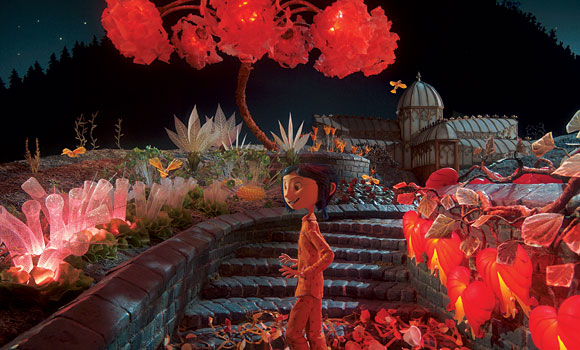Behind the Scenes: The Avengers
Posted on January 2, 2013 at 8:00 am
Look at all that went into creating this amazing shot from “The Avengers.”
Posted on January 2, 2013 at 8:00 am
Look at all that went into creating this amazing shot from “The Avengers.”
Posted on August 17, 2011 at 8:00 am
Related Tags:
Posted on August 28, 2010 at 8:24 am
“Avatar” comes back to the screen this week in 3D IMAX only (with nine new minutes) and box office returns are inflated with 3D glasses surcharges. Theater owners like 3D because of the extra charges and the push it gives to audiences who might otherwise wait a few months for the DVD. Home entertainment systems are working hard to bring 3D effects to your home. Studios take films that were shot “flat” and convert them post-production to 3D in films like “Alice in Wonderland” and “Clash of the Titans.” Some 3D movies set records (“Avatar”). Others flop (“The Last Airbender” — coincidentally previously named “Avatar”). Where is it all going?
Slate has a good discussion on the pros and cons of 3D with movie critic Dana Stevens and “Explainer” Daniel Engber. I especially liked Engber’s list of his favorite 3D scenes. The “Dial M for Murder” Grace Kelly scissors shot he mentions is a classic. However, while Alfred Hitchcock shot the film in 3D, it was not released that way until 1982, 38 years after it was made.
3D is like any other tool available to film-makers. It is only as good as the imagination and judgment of the people who are using it. This year, it was used poorly (any movie where it was added after shooting, though the rabbit hole scene in “Alice in Wonderland” had a nicely vertiginous thrill) and brilliantly (“Despicable Me” — be sure to stay for the credit sequence, which both makes fun of and makes perfect use of the technology).
Posted on February 22, 2009 at 12:00 pm
Wired Magazine has a fascinating story about the breathtaking special effects in “Coraline.” In an era when we are used to astonishingly “true” images generated by computers, the old-school charms of this stop-motion movie, where everything you see was actually there being photographed, enhanced with ground-breaking 3D technology, is entrancingly tactile. A painstaking process meant that no more than 2-4 seconds a day were completed, with thousands of tiny adjustments in each scene. The title character’s 200,000 facial expressions, required 350 top plates for her eyebrows and forehead and 700 bottom plates for her mouth.
It’s the stunningly inventive DIY visual effects that director Henry Selick (The Nightmare Before Christmas) used to bring the story to life. A quarter-million pieces of popcorn are transformed into cherry blossoms, superglue and baking soda are whipped into snow, and black fishing line becomes creepy chest hair.

In all, the crew hand-built 150 sets and 250 jointed puppets, as well as plants and toys with countless moving parts. “What makes this film different,” says Tom Proost, one of the art directors, “is that everything is real and everything moves.”
Every detail is brilliantly imagined and brilliantly executed. I love the way they created the steam from a tea kettle: cotton spritzed with hair spray. I’ve seen the film twice and plan to go back again just to see the extraordinary garden and theater scenes and to catch some of the many details I know I have missed.